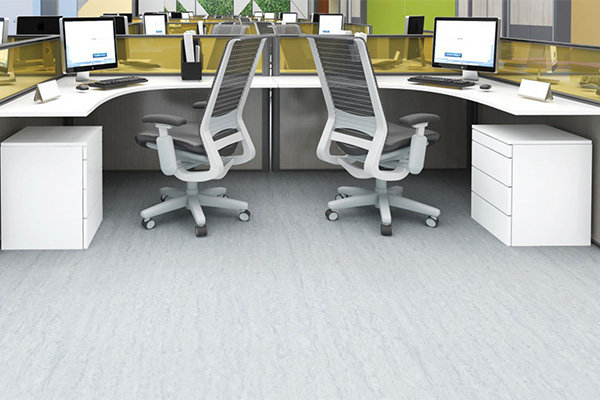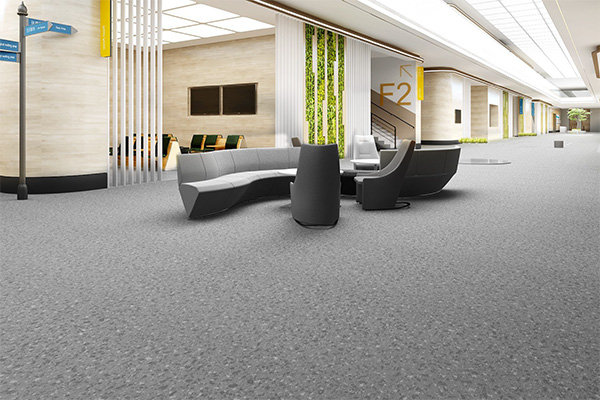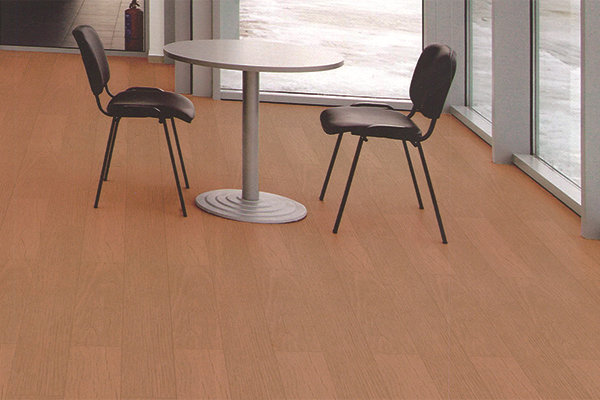What Is The Difference Between Homogeneous Vinyl Flooring And Rubber Flooring?

Homogeneous vinyl flooring and rubber flooring are both popular choices for commercial and industrial applications due to their durability, resilience, and ease of maintenance. However, there are several key differences between the two:
Material Composition:
Homogeneous Vinyl Flooring: Homogeneous vinyl flooring is made primarily of PVC (polyvinyl chloride) and plasticizers, with color and pattern distributed evenly throughout the thickness of the material. It typically consists of multiple layers of PVC, including a wear layer, color layer, and backing layer.
Rubber Flooring: Rubber flooring is made from natural or synthetic rubber compounds, which may include additional fillers, pigments, and additives. It is typically solid throughout its thickness, with no distinct layers like vinyl flooring.
Appearance and Design:
Homogeneous Vinyl Flooring: Homogeneous vinyl flooring offers a wide range of colors, patterns, and designs, including solid colors, marbleized patterns, and abstract designs. The design is typically consistent throughout the entire thickness of the material.
Rubber Flooring: Rubber flooring is available in a variety of colors and textures, including solid colors, speckled patterns, and textured surfaces. While rubber flooring can mimic the appearance of natural materials such as stone or wood, it generally has a more uniform appearance compared to vinyl flooring.
Durability and Resilience:
Homogeneous Vinyl Flooring: Homogeneous vinyl flooring is known for its durability, resilience, and resistance to wear, scratches, and stains. It can withstand heavy foot traffic and is suitable for commercial and industrial environments.
Rubber Flooring: Rubber flooring is also highly durable and resilient, with excellent resistance to wear, impact, and abrasion. It is often used in areas where shock absorption and sound insulation are important, such as gyms, playgrounds, and healthcare facilities.
Maintenance:
Homogeneous Vinyl Flooring: Homogeneous vinyl flooring is relatively easy to maintain and can be cleaned with regular sweeping, mopping, or vacuuming. It is resistant to stains and moisture, making it suitable for areas with high levels of foot traffic.
Rubber Flooring: Rubber flooring is also easy to maintain and can be cleaned with mild detergent and water. It is resistant to moisture and most chemicals, making it suitable for areas where spills are common.
Installation:
Homogeneous Vinyl Flooring: Homogeneous vinyl flooring is typically installed using adhesive or glue-down methods. It can be installed over a variety of subfloor surfaces, including concrete, plywood, and existing flooring.
Rubber Flooring: Rubber flooring is available in both rolls and tiles and can be installed using adhesive or interlocking systems. It is suitable for installation over concrete, wood, or other flat subfloor surfaces.
In summary, while both homogeneous vinyl flooring and rubber flooring offer durability, resilience, and ease of maintenance, they differ in terms of material composition, appearance, and installation methods. The choice between the two depends on factors such as the specific requirements of the environment, desired aesthetic, and budget constraints.




